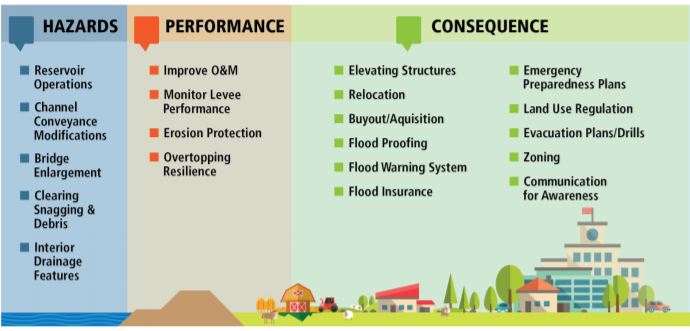Risk is a tool that is used to understand and communicate the probability (or likelihood) and consequence of uncertain future events. There are three components of flood risk: hazard, performance, and consequence.

(1) Hazards. Hazards are events that cause the potential for an adverse consequence (e.g. flooding). Typically, the hazards considered in levee safety are potential flooding sources and seismic hazards. Risk enables an understanding of the likelihood of possible hazards and how they may change over time.
(2) Performance. Risk provides a framework for consistently evaluating the probability (or likelihood) of how the levee system is anticipated to function given possible hazards. This is done through considering a combination of past performance, existing conditions, maintenance, and how the existing levee compares to current engineering standards. How the levee is expected to perform may change over time based on the current understanding of industry best practices for levee design and operation despite unchanging levee conditions.
(3) Consequence. Consequences are the effect or outcome resulting from the combination of the hazards and performance. In order to provide a complete picture of the risk and to facilitate more informed decisions, consequences are included in the risk discussion. Potential consequences can also be used to show the benefits provided by a levee system. Consequences may include estimates of potential impacts to life, property, environment, or navigation. All consequences should be considered to inform responsible and transparent decisions.